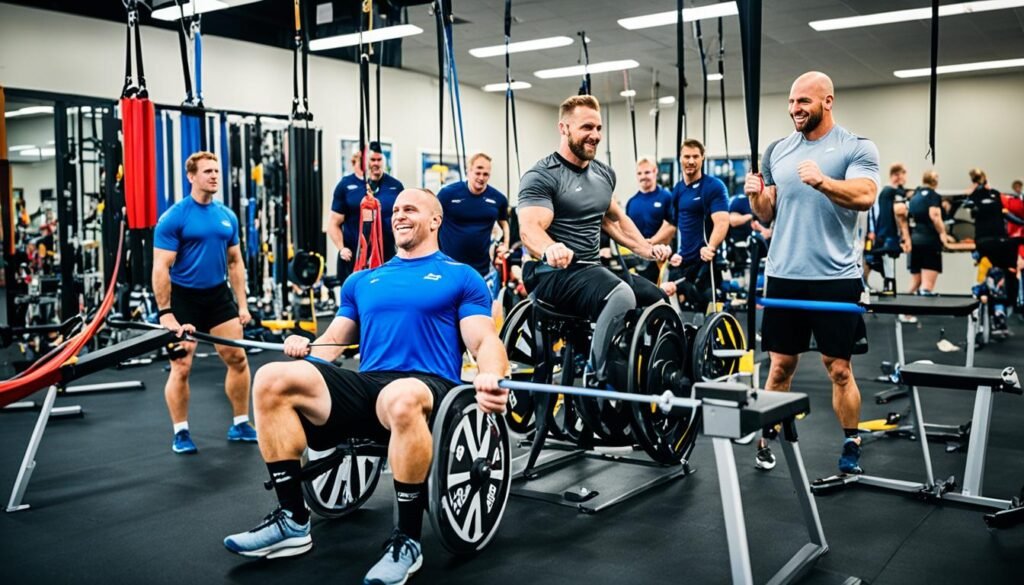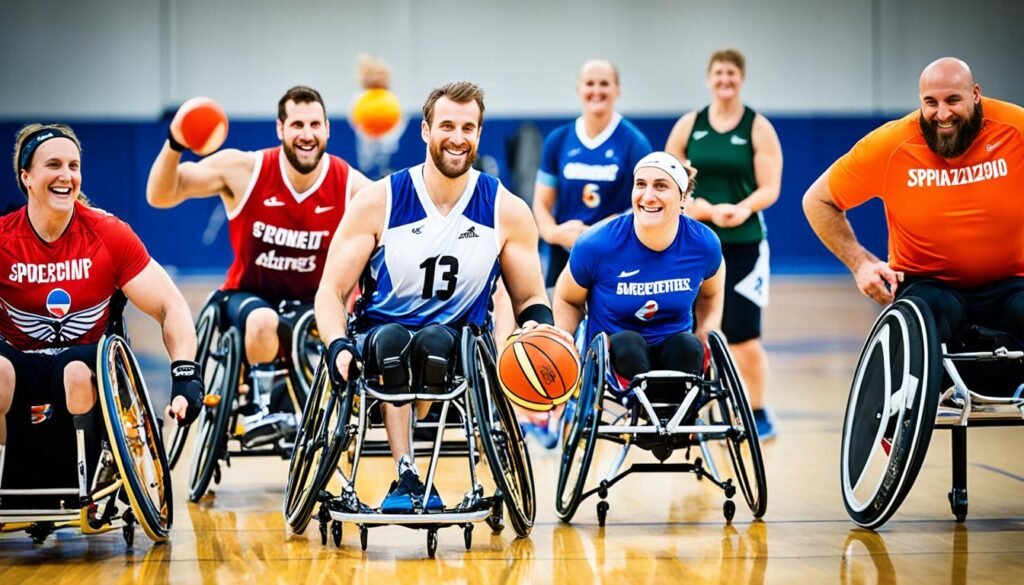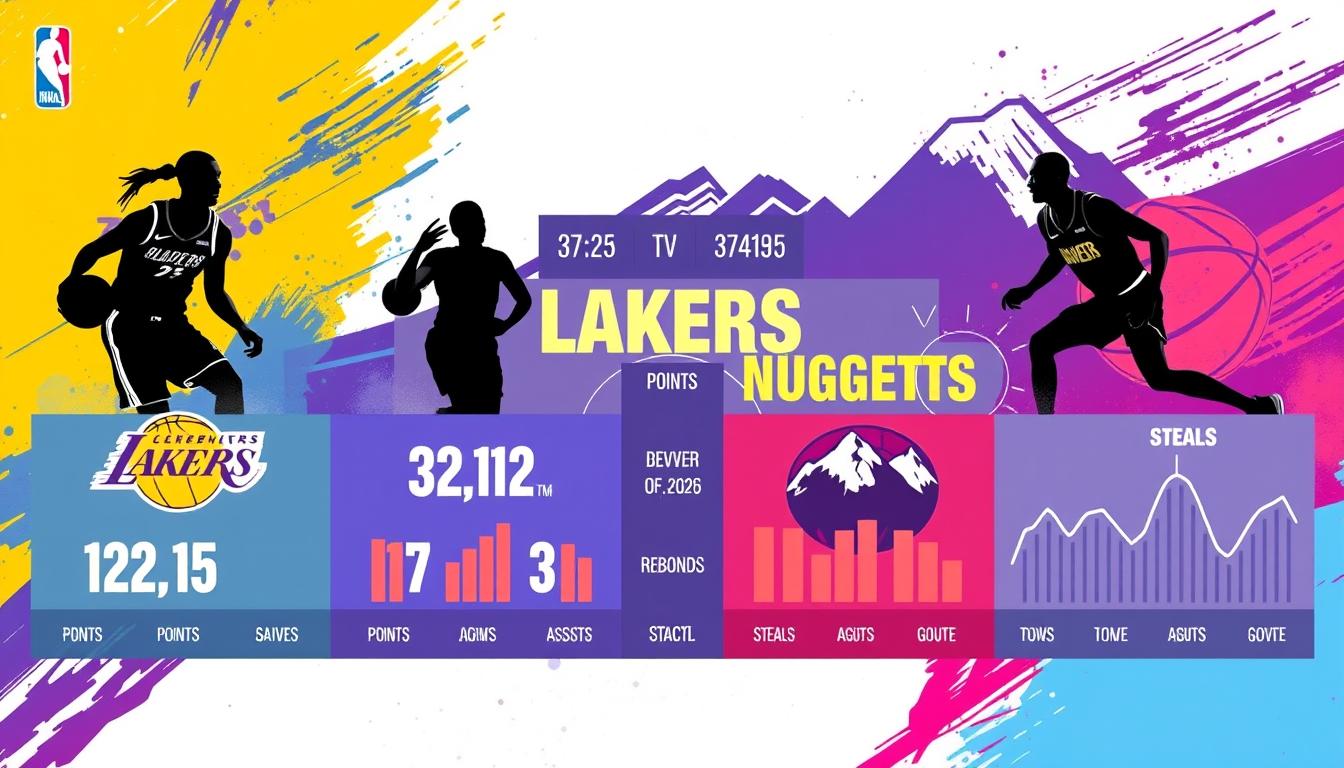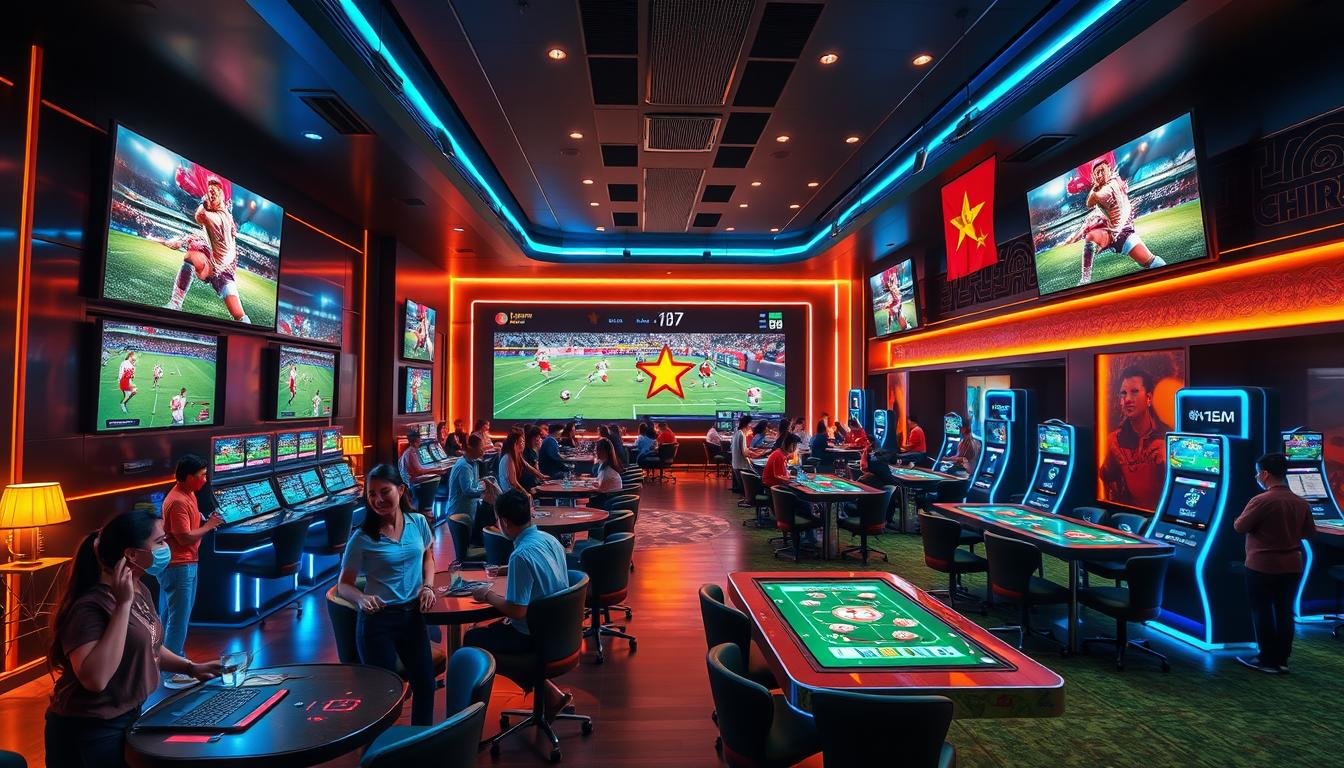Adaptive sports are changing how we think about athleticism. They create spaces where people with disabilities can shine. These activities are tailored to the unique needs of each participant. This ensures that everyone can enjoy sports, no matter their physical abilities.
These programs do more than just help people stay fit. They also build a sense of community and empowerment. Sports like basketball, tennis, and swimming are adapted in clever ways. This makes them fun and accessible for athletes with different abilities.
Key Takeaways
- Adaptive sports foster disability inclusion in sports by tailoring activities to meet diverse needs.
- These programs enhance physical fitness and promote a healthy lifestyle among participants.
- Engagement in adaptive sports can significantly boost mental health and well-being.
- Participating in adaptive sports builds a strong sense of community and support.
- The modifications in adaptive sports make conventional sports accessible to athletes with disabilities, ensuring everyone has the opportunity to compete and enjoy.
The Importance of Adaptive Sports
Adaptive sports improve the lives of those with disabilities in many ways. They boost physical and mental health and help with making friends. It’s a fun way to stay healthy and feel included.
Physical Benefits
Adaptive sports offer great health benefits. They help people get stronger, move better, and have more energy. Being active keeps you healthy and prevents sickness. Adaptive sports keep people moving in a safe and fun way.
Mental Health and Well-being
These sports are also great for your mind. Being part of a team or exercising regularly can make you happier. It fights off sadness and worry. Winning or just playing sports makes people feel good about themselves.
Social Integration
Adaptive sports connect people. They make it easy for those with disabilities to make friends and be part of a team. Feeling like you belong and can join in is really important. It helps build confidence and encourages everyone to take part in community life.
| Benefits | Impact |
|---|---|
| Physical Health Improvements | Increased strength, better coordination, enhanced mobility |
| Mental Health Benefits | Reduced depression, lower anxiety, improved self-esteem |
| Social Inclusion | Enhanced social connections, increased community engagement |
History of Adaptive Sports
The story of adaptive sports shows the power of human spirit and creativity. It began after World War II. The aim was to help injured veterans heal through sports. This idea grew into competitive events, changing the world of sports for people with disabilities.
Early Beginnings
Dr. Ludwig Guttmann played a key role in starting adaptive sports in 1948. He set up the Stoke Mandeville Games for World War II veterans. These games led to the Paralympic Games. They started with simple sports like archery and wheelchair races. This was the start of many sports for people with different abilities.
Milestones and Achievements
Adaptive sports have come a long way with many big moments. The first Paralympic Games in 1960 in Rome were a huge step. They brought together 400 athletes from 23 countries. Another big moment was forming the International Paralympic Committee (IPC) in 1989. It helps organize adaptive sports around the world.
Here’s a table summarizing some of the key milestones:
| Year | Event | Significance |
|---|---|---|
| 1948 | Stoke Mandeville Games | Foundation of modern adaptive sports |
| 1960 | First Paralympic Games | Introduction of international competition |
| 1989 | Establishment of IPC | Governance and standardization of adaptive sports |
| 2001 | Madrid Congress | Integration of multiple disability groups under IPC |
These events show the amazing growth of adaptive sports. They have become a way for athletes to shine on the global stage.
Popular Adaptive Sports
Adaptive sports offer a way for people with disabilities to join in on competitive and fun activities. We’ll look at some favorite adaptive sports and what makes them great for everyone. Each sport adjusts to be welcoming and enjoyable.

Wheelchair Basketball
Wheelchair basketball is well-known among adaptive sports. It has standard basketball rules but for wheelchair users. Special wheelchairs are used that move fast and turn quickly.
The game is played on regular basketball courts. The hoops are at the usual height. It’s all about fast moves, working as a team, and thinking ahead.
Sitting Volleyball
Sitting volleyball changes up regular volleyball for athletes with leg impairments. It’s played on a smaller field with a lower net. Players always sit during the game.
This sport needs fast moves, sharp reflexes, and strong teamwork. It’s become a favorite at the Paralympic Games, showing the amazing abilities of the athletes.
Para Swimming
Para swimming welcomes athletes with different disabilities into the pool. There are many swim styles and lengths to compete in. Classes help make sure the competition is fair.
Athletes might use special gear like prosthetics or floats for help and safety. This makes para swimming one of the most adaptable water sports.
Adaptive sports are always getting better, offering athletes ways to be active, learn, and do incredible things. Sports like wheelchair basketball, sitting volleyball, and para swimming make sports more open and inspiring for everyone.
Paralympians: Role Models and Heroes
Paralympic athletes show great resilience and determination. They turn their challenges into triumphant stories. Tatyana McFadden, with her 17 Paralympic medals, shows the spirit needed to excel.
These athletes break records in their sports and inspire people worldwide. Through their efforts, they teach us to overcome our own difficulties.
Paralympians are true heroes. Their hard work and perseverance inspire us all. Jessica Long‘s 23 swimming medals showcase their high skill levels.
They also push for more inclusion in sports. Their achievements make them beacon of hope and motivation for many.
Events like the Paralympic Games shine a light on accessibility issues. These athletes prove that it’s ability, not disability, that makes a great sportsperson.
“My disability does not limit me. It empowers me to push boundaries and set new records,” – Jessica Long.
Paralympians inspire the next generation towards acceptance and visibility for disabled athletes. They remind us of the unifying power of sports. They show us how sports can break barriers and promote social change. Learn more about adaptive sports inclusion at this resource.
| Paralympian | Sport | Medals Won |
|---|---|---|
| Tatyana McFadden | Track and Field | 17 |
| Jessica Long | Swimming | 23 |
Inclusive Athletics: Bridging the Gap
The bond between inclusive sports and disability sport advocacy boosts equality in athletics. We see this impact when we look at community programs and inclusive policies. Together, they help disabled and non-disabled athletes come together.
Community Programs
Community programs are key for embracing inclusive sports. Groups like the YMCA and Special Olympics offer tailored programs for athletes with disabilities. These initiatives make sports accessible and encourage community bonding and support.
Inclusive Policies
Inclusive policies are crucial for supporting disabled athletes. They focus on making sports more accessible through funding and coaching. The Americans with Disabilities Act (ADA) is a great example. It has opened up sport facilities and programs to those with disabilities.
| Field | Community Programs | Inclusive Policies |
|---|---|---|
| Objective | Promote access to sports and social integration | Ensure accessibility, funding, and proper coaching |
| Organizations Involved | YMCA, Special Olympics | Governments, Sports Federations |
| Key Legislation | Local Initiatives | Americans with Disabilities Act (ADA) |
| Impact | Improved community support | Enhanced accessibility and resources |
Adaptive Training Programs
Adaptive training programs are key for athletes with disabilities. They provide personalized support and enhance performance with unique sport coaching and equipment. These programs make sure workouts match the athlete’s abilities and goals.
Customized Workout Plans
Customized workout plans are a major part of successful disability sport coaching. By creating exercises that suit different disabilities, coaches can improve training. These plans aim to increase strength, flexibility, and endurance, reducing injury risks.
Adaptive sports equipment is also key in tailoring each training plan. It’s made for different disabilities, ensuring workouts are safe and effective. Items like modified wheelchairs for racing or prosthetics for running are vital for athletes’ growth.

Technology Integration
Technology has transformed adaptive training programs. Wearable devices and virtual reality give feedback and create immersive experiences. This helps athletes track their progress and perfect their techniques for better performance.
Wearable gadgets monitor heart rate, speed, and distance, offering data that coaches use to improve training. Virtual reality lets athletes practice in a simulated environment. It improves skills and confidence for competitions.
By adding technology, adaptive training programs stay ahead in sports science. They evolve to meet athletes’ needs, combing coaching, equipment, and technology. This leads to top performance and safety for athletes.
Disability Sports Equipment: Innovation and Design
Innovation and smart design are key to growing adaptive sports gear. The University of Utah Rehabilitation Center’s Tetradapt Initiative works on new sports equipment for disabled individuals. This enhances how they perform and their life quality.
There’s been a big leap in assistive sports technology lately. It’s led to gear like custom wheelchairs and high-tech prosthetics. These are vital in helping disabled athletes shine. For example, gear like the TetraSki offers more freedom and control over snow sports.
Below is a table with some new innovations:
| Equipment | Features | Benefits |
|---|---|---|
| Customized Wheelchairs | Light-weight, Durable, Adjustable | Enhanced mobility and performance in sports |
| Advanced Prosthetics | High-functioning, Flexible, Aesthetic design | Improved agility and comfort for athletes |
| TetraSki | Joystick Control, Bi-Ski Design | Greater independence in snow sports activities |
| Tetra Watercraft | Adaptable, Easy to Control | Enhanced water sports experience |
Keeping up with new tech in assistive sports leads to more inclusive programs. Take the TRAILS program. It provides diverse activities and programs for those with disabilities, year-round. This highlights how critical adaptive sports gear is. It helps bridge gaps and boosts well-being for all athletes.
Accessible Sporting Venues: Designing for All
Making sports places everyone can enjoy means thinking hard about how to include everyone. This idea, called inclusive venue design, focuses on building sports spots where athletes and fans with disabilities feel welcome. It’s about planning well and following rules that help everyone have a good time.
A big step is making sure stadiums follow the ADA-compliant stadiums rules. The Americans with Disabilities Act (ADA) requires that sports places are easy for everyone to get into and enjoy. This includes things like seats you can get to in a wheelchair, ramps, lifts, and signs that are easy to read. Making places where everyone feels invited is key.
What’s important in inclusive venue design? Let’s see:
- Ways to get in and out that work for everyone
- Wheelchair seating with good views and enough space
- Tools that help people with hearing issues
- Signs that are easy to see and touch, with Braille too
- Restrooms that are easy for everyone to use
Putting these ideas into action makes sure that accessibility in sports facilities is a big part of creating them. This approach helps everyone feel included. It gives all athletes and fans the same chances to enjoy sports.
| Feature | Importance | Example |
|---|---|---|
| Accessible Seating | Ensures comfort and clear sightlines | Reserved wheelchair areas |
| Ramps and Elevators | Facilitates easy movement | Multiple entry and exit points |
| Assistive Listening Systems | Helps those with hearing impairments | Headset rentals at the information kiosk |
| Braille Signage | Aids individuals with visual impairments | Maps and directions with Braille |
| Accessible Restrooms | Provides necessary facilities for all | Widened stalls and lower sinks |
Disability Sport Organizations You Should Know
Many disability sport organizations play a big part in helping adaptive sports grow. They focus on promoting sports, advocacy, and funding. Their goal is to make sure athletes with disabilities get a chance to take part in different sports activities.
National Organizations
National groups for adaptive sports are key in supporting athletes with disabilities all over the country. These organizations are important for organizing events, giving training and resources, and pushing for better policies. Some well-known national organizations are:
- Disabled Sports USA: They offer adaptive sports nationwide like skiing, cycling, and kayaking.
- United States Paralympic Committee: This group handles the US participation in the Paralympic Games and supports top athletes.
- BlazeSports America: They focus on sports and activities for young people and veterans with disabilities.
Local and Community Groups
Community disability sports are vital for promoting efforts at the local level. These groups make adaptive sports available to more people. Some key local and community organizations are:
- Adaptive Sports New Jersey: They provide adaptive sports throughout the year for all ages and abilities.
- Bay Area Outreach & Recreation Program (BORP): Located in California, they offer sports and recreational activities that are accessible.
- Capital District Sled Warriors: This group is all about sled hockey in New York’s local communities.
Understanding how these disability sport organizations work can make a big difference in policy and community access. When local and national groups work together, adaptive sports can become a key part of athletes’ lives. This helps promote health and social integration.
Psychological Aspects of Adaptive Sports
Adaptive sports offer big psychological benefits. These benefits help athletes with disabilities feel better emotionally. Taking part in these sports can make you feel good about yourself. It helps you feel like you’ve accomplished something and gives you power. Adaptive sport psychology also teaches how to bounce back from tough times. It helps athletes build a strong mind.
Adaptive sports play a big part in how athletes see themselves. They help athletes find where they fit and give them a purpose. This is key for their mental growth. Being part of these sports lets them see their skills in a new light. This makes them feel strong, both while playing and in everyday life.
Adaptive sports also create a community that supports each other. This community feeling is really good for feeling happy and understood. The friendships made here make life better for the athletes.
| Aspect | Psychological Benefit |
|---|---|
| Resilience | Helps athletes to overcome challenges |
| Self-Esteem | Enhances sense of achievement and personal empowerment |
| Identity Formation | Contributes to a sense of belonging and purpose |
| Community Support | Fosters camaraderie and understanding among athletes |
Being a part of adaptive sports is really good for the mind. With the help of experts in psychological benefits of sports, athletes can feel better emotionally. They can make their lives better by playing sports.
Conclusion
The journey through the world of adaptive sports shows a world filled with tough spirits, new ideas, and a strong push for inclusion. This article has covered the crucial roles of adaptive sports and their history. And the brave Paralympians who inspire many. Each sport, like wheelchair basketball or para swimming, highlights the incredible strength and skills of these athletes.
Adaptive training, special gear, and places everyone can access are key in helping disabled athletes. They keep the world of adaptive sports moving forward. Working together, big and small groups create a support system. This goes beyond sports, helping with social bonding and mental health. The good effects on the mind show how adaptive sports change lives and how we see the world.
Looking to the future, we must keep working for rules and programs that include everyone. Helping disabled athletes matters a lot. It opens doors for the next groups of athletes to enjoy sports freely. With continuous support and new ideas, adaptive sports will grow and change in exciting ways. Let’s be part of this movement, for a lasting effect and to keep the flame of inclusion and effort burning bright.
FAQ
What are adaptive sports for athletes with disabilities?
Adaptive sports are sports changed or made to help people with disabilities. They help give a sense of power, keep the body fit, and bring people together. These sports are all about making sports fun and open for everyone.
What are the physical benefits of adaptive sports?
Taking part in adaptive sports makes you stronger and more flexible. It helps with moving around easily and keeps you fit. These activities are good for your heart, help you manage your weight, and build muscle.
How do adaptive sports enhance mental health and well-being?
Playing adaptive sports can make you feel better mentally. It lowers feelings of sadness and worry, and makes you feel good about yourself. These sports also make you strong and positive in life.
What is the history of adaptive sports?
The story of adaptive sports began after World War II to help injured soldiers. As years passed, these sports grew. Important events include the start of the Paralympic Games and groups that support sports for everyone.
What are some popular adaptive sports?
Many people enjoy sports like wheelchair basketball, sitting volleyball, and swimming for athletes with disabilities. These sports have special rules and gear for the athletes. They are loved by both those who play and watch them around the world.
Why are Paralympians considered role models and heroes?
Paralympians are seen as heroes because they show courage and achieve great things, despite challenges. Their stories and success in sports help more people know about and respect adaptive sports. They prove that people with disabilities can do amazing things.
How does inclusive athletics bridge the gap between disabled and non-disabled athletes?
Inclusive sports let athletes with and without disabilities play together. This helps bring equality to sports and builds strong communities. Everyone has the chance to compete and support each other in these activities.
What are adaptive training programs?
Adaptive training programs are special workouts made for athletes with disabilities. They use the latest in sports technology and coaching that fits the athlete’s needs. This helps them do their best in sports safely.
How has disability sports equipment innovated over the years?
There’s been a lot of new designs and improvements in gear for disability sports. From wheelchairs made just for sports to better sports equipment. These changes help athletes perform better and feel more comfortable.
What is important about accessible sporting venues?
Having places where every athlete can go to play sports is very important. These places meet certain standards and are made to welcome athletes of all abilities. They make sure everyone can join in safely and easily.
Which disability sport organizations are essential to know?
Important groups include the United States Olympic & Paralympic Committee (USOPC) and local sports clubs. They stand up for athletes, help get money for sports, and make sure everyone can play.
How do adaptive sports positively impact psychological aspects?
Adaptive sports do a lot for the mind by building strength, self-worth, and happiness. Being part of these sports gives a feeling of who you are, being strong, and having friends who understand. It’s great for our mental health.







